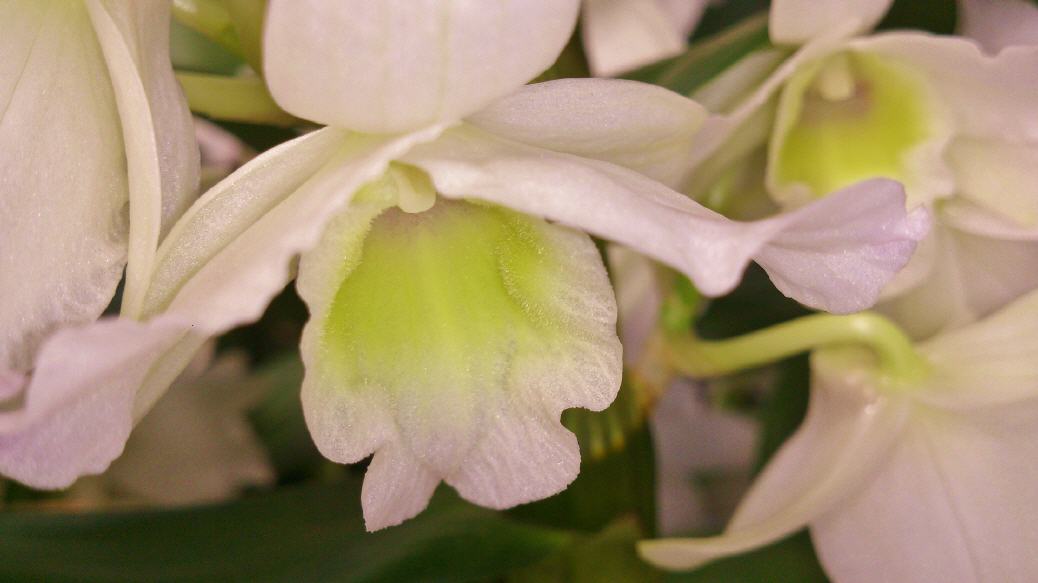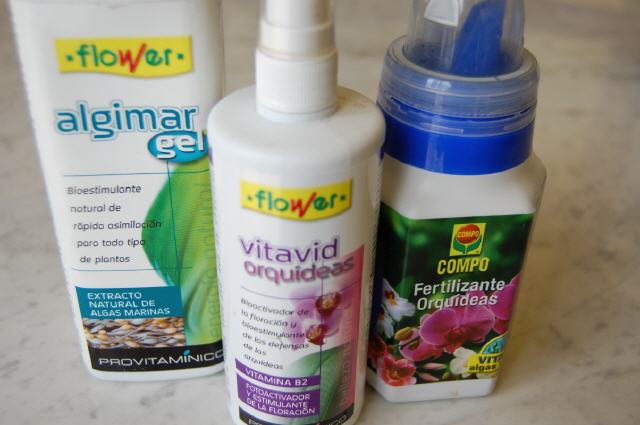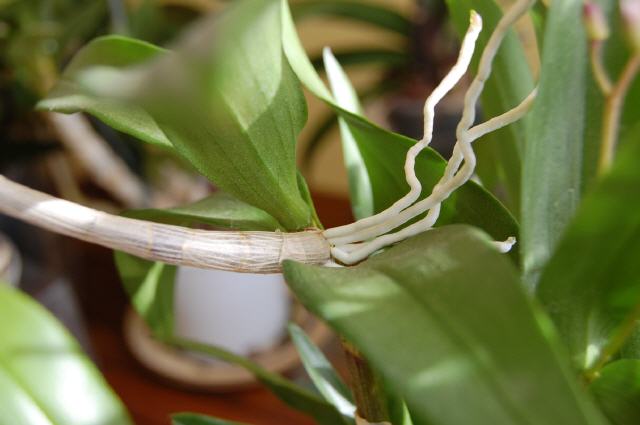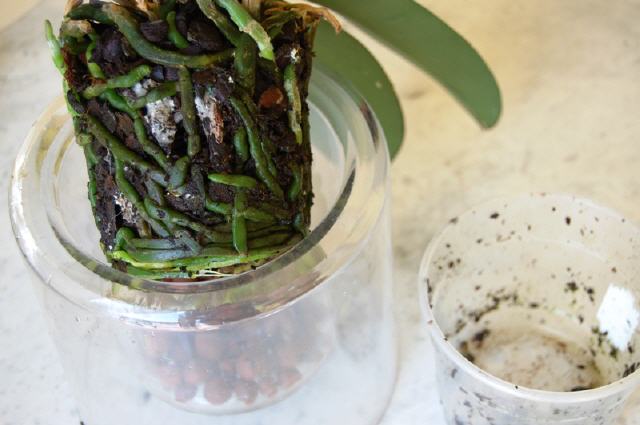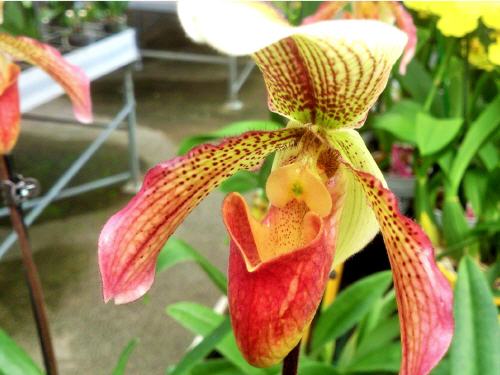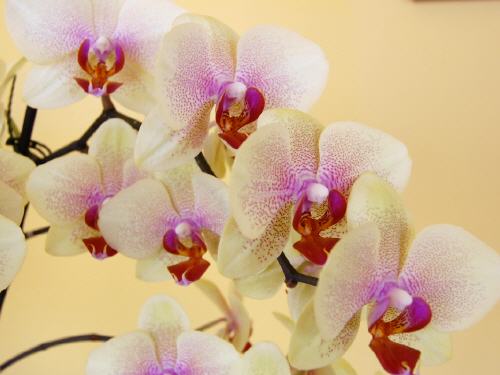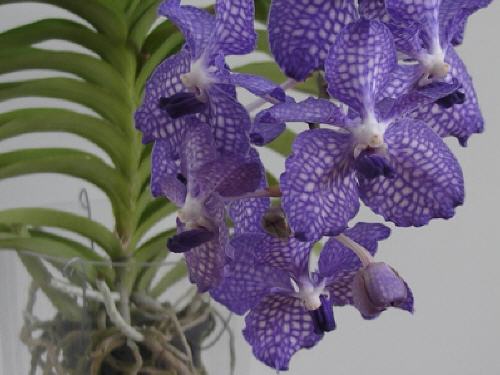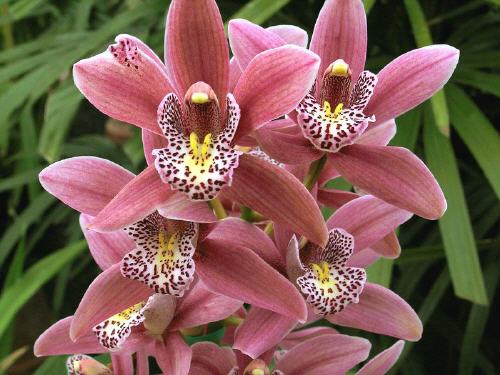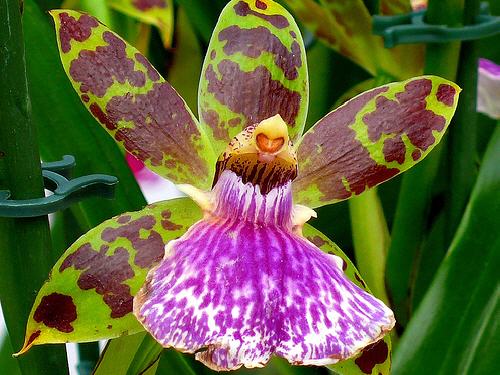The Dendrobium
1- General characteristics.

This gender comprises more than 1,500 species. This is a diverse group of plants in all aspects.
Their geographic distribution includes different habitats such as Southwest Asia , the Pacific Islands, Australia and New Zealand. We can find it from sea level to altitudes up to 3,500 meters.
Most of them as the name suggests ( " dendro " = tree or log and " bios = life") are epiphytes , ie they live using as support the trunks and branches of trees , feeding on organic moisture materials that water from the rain drags through the structures that support it.
There are species that are adapted to different climates but always predominantly tropical which have a constant humidity.
We can find species of different sizes, from a few centimeters to several meters. The color of the flowers is also very varied and rich because of the many hybrids made with this species.
Detail stem and pseudobulbs (hizomes) Dendrobium:

Most of these plants grow with strong stems from rhizomes. The leaves are fleshy and usually develop individually at regular intervals directly from the stem.
The flowers can be developed in the upper part of the stem and through a floral rod or along each stems from the same trunk born without flower stem. The last one plants are beautiful because when the flowers bloom, the plant is all wrapped in the color of the flower. Perhaps one of the most commercialized is White one, called dendrobium nobile.
Keep in mind that, in some species ( like Dendrobium nobile ) , these leaves are deciduous and therefore may after flowering and in the rest period falling leaves . Nevertheless the plant is still alive but in a vegetative rest.
In nature the deciduous leaves of dendrobium fall in winter coinciding with the arrival of the cold and dry season. That makes the plant saves nutrients and survive on reserves pseudobulbs or rhizome. With the arrival of spring and warmer temperatures with rainfall, plant reenters active and generates new roots, shoots and leaves. It is at this time when we must do a regular watering and fertilization to stimulate their development and generation of new flowers.
The most common dendrobium can be grown at home because it does not require special care, but we must ensure good lighting conditions.
Other Orchids Dendrobidium:

Breeding:
Dendrobium breeds by seeds and keikis generation. Being the first mechanism difficult of reproduction in artificial environments, dendrobium give us an alternative method that supposes the creation of an exact replica of the mother plant. First a small outbreak appears on the trunk of the mother plant to be growing progressively and to develop their own roots and plant. Once keiki (child) has roots of 2 or 3 cm, the plant of the trunk can be separated and cultivated in a separate container. This system is extremely easy and affordable for anyone. Later, a few images of keikis in dendrobiums are shown:
Keikis in the base of the trunk:
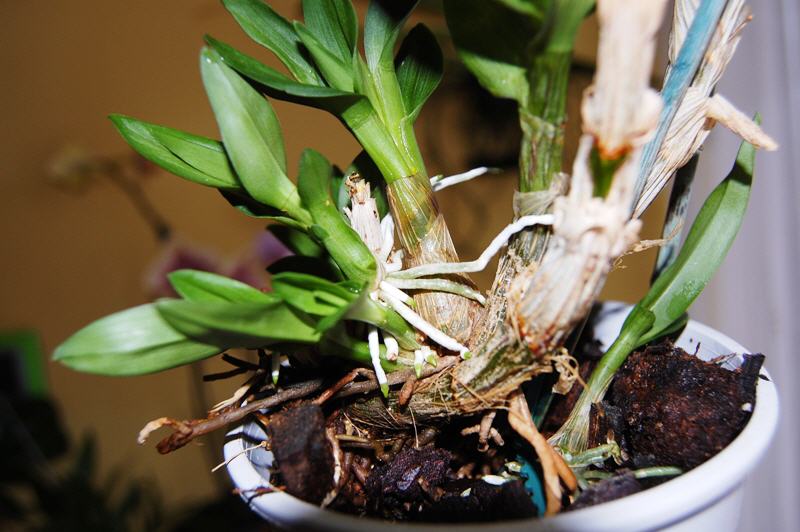
Detail roots keiki already ready to separate it:
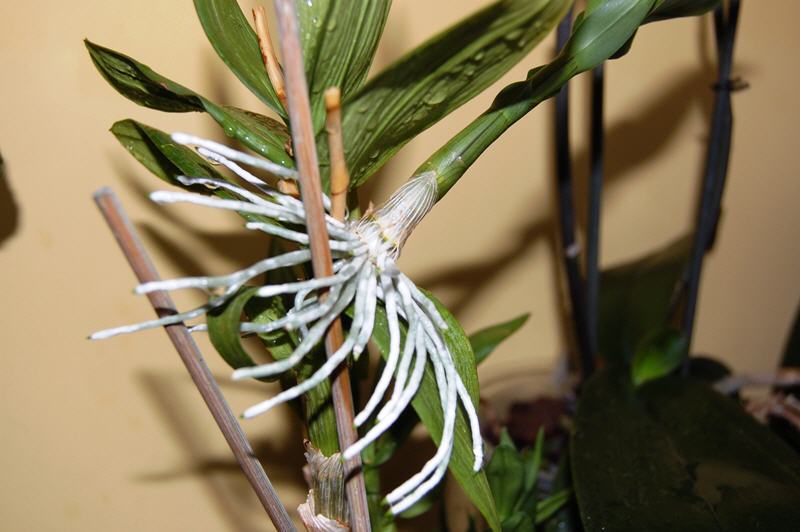
Detail floral rod dendrobium:
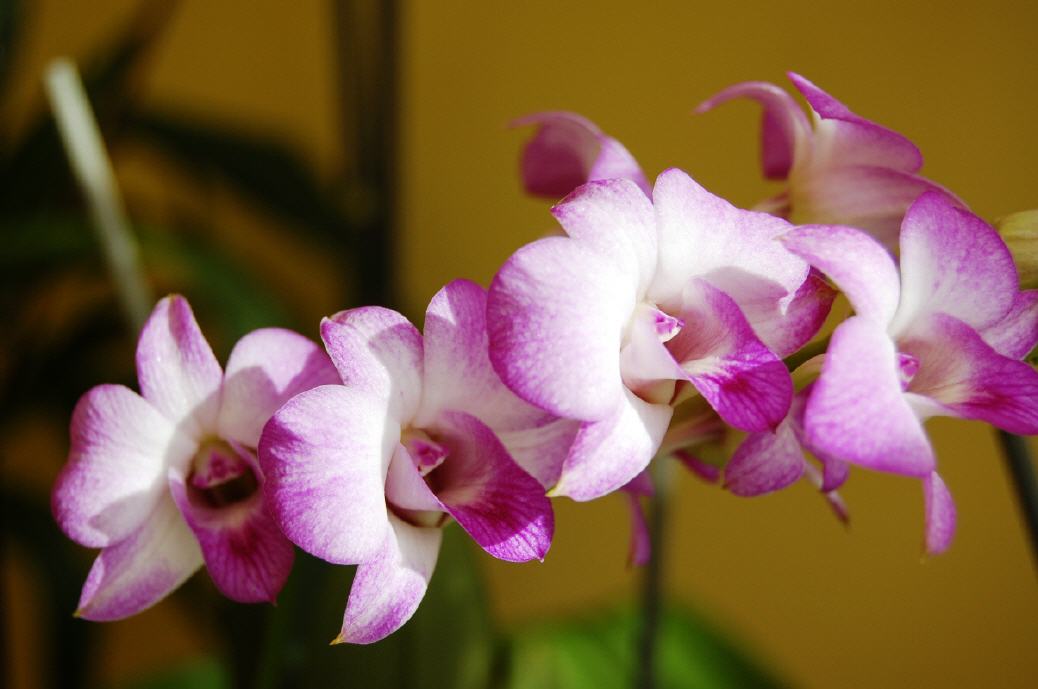
2- Table of basic needs:
| Conditions: | Information: | Observation: |
|---|---|---|
| Temperature | Maximum temperatures not exceeding 30 ° C. Minimum temperatures of 10 º C. | Summer: Day 28-30 ° C. Night :22-25 ° and Winter: Minimum of 10 º C. |
| Humidity | The optimum humidity is 60 to 70% in the growing season (spring-summer). | In winter (rest period in deciduous) the humidity level should be reduced (40 to 50%). |
| Light | They need very luminous environments without coming to the direct Sun. | Also require good ventilation. |
| Fertilizer | Add fertilizer for orchids in the water we use for irrigation in the growing season (spring-summer). | In winter (dormant period) dendrobium not fertilize deciduous (non-evergreen). |
| Substrate | We can install them in small containers with a special substrate for orchids and has a high capacity to filter water (peat, pine bark, etc..). | |
| Others | You need good ventilation but avoid direct airflow over the plant. | They are not an especially delicate plant if we are able to provide the conditions needed. |
Different specimens of Dendrobiums:

More information about the care of orchids:
 |
 |
 |
 |
 |
Please rate this page by clicking on the icons.


